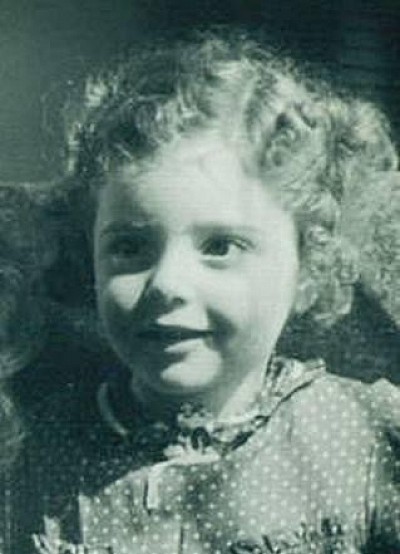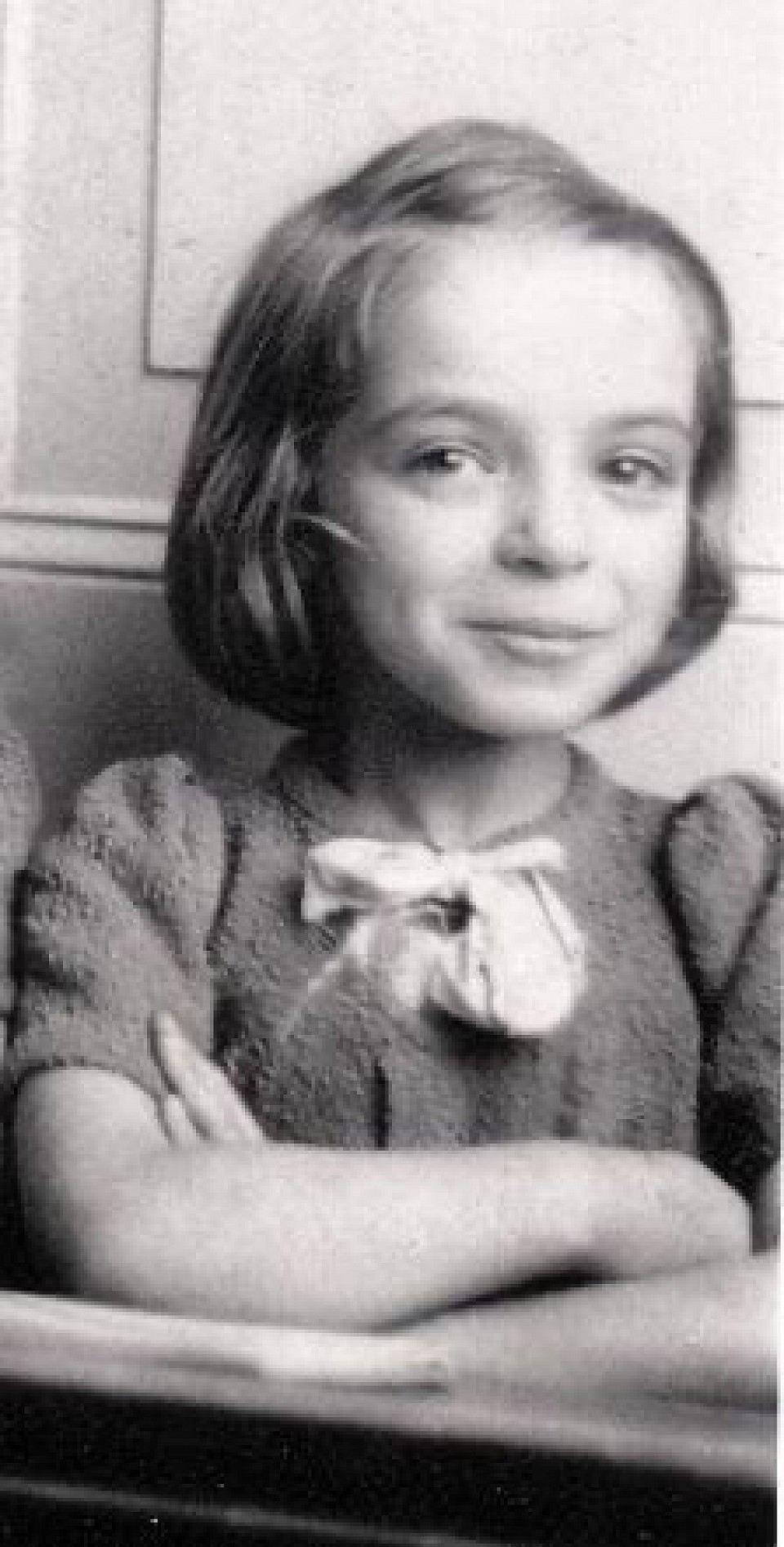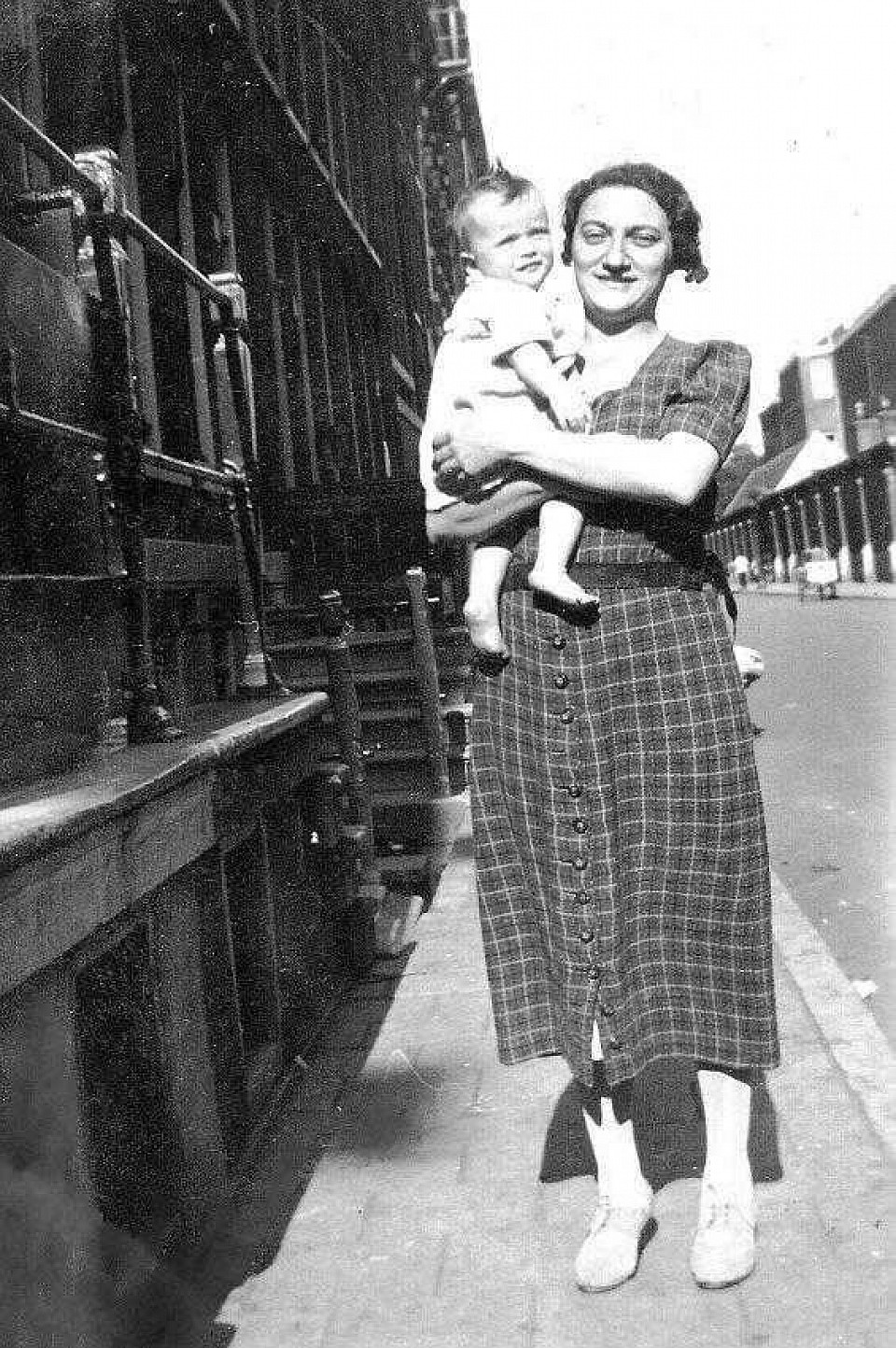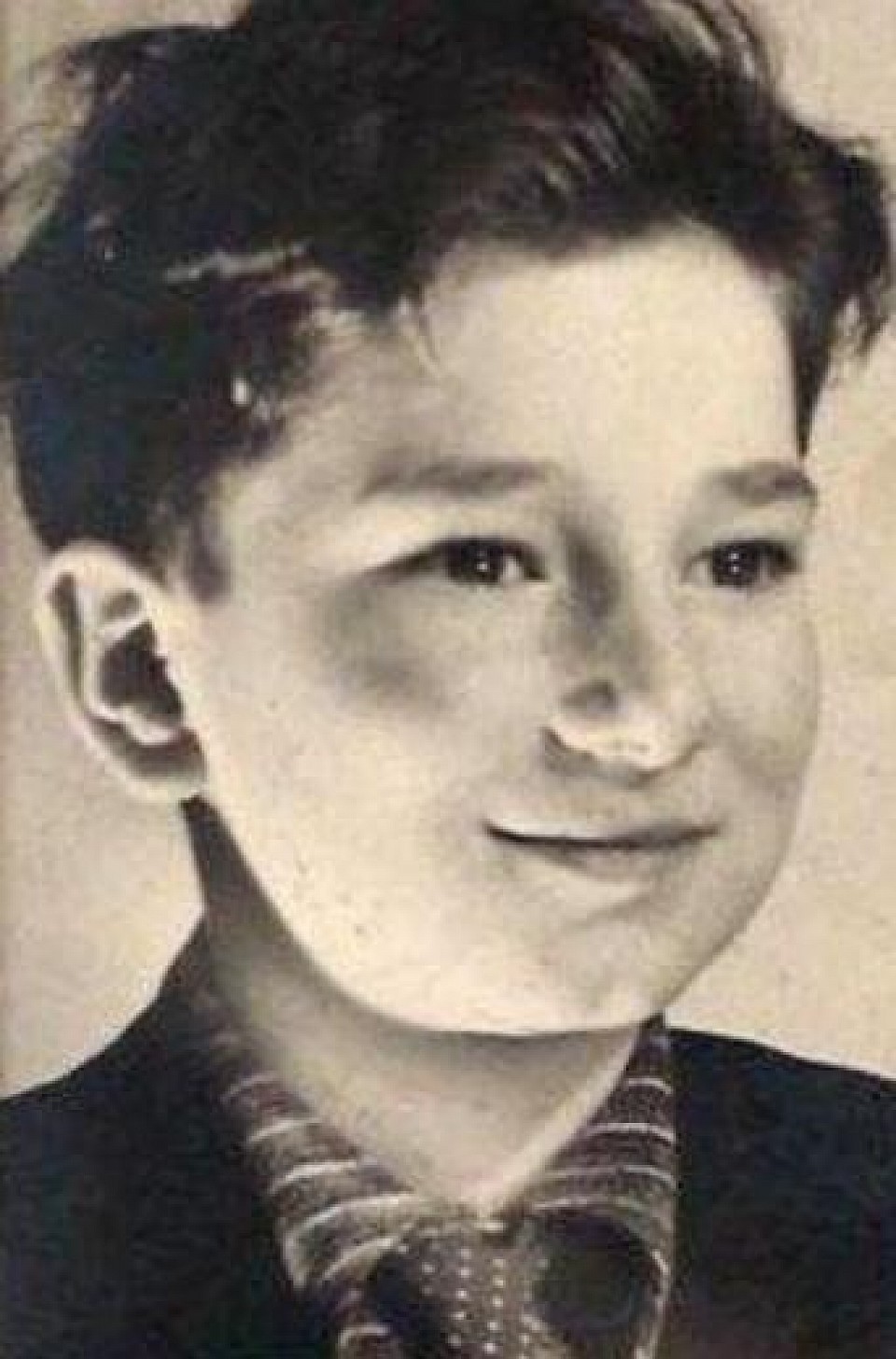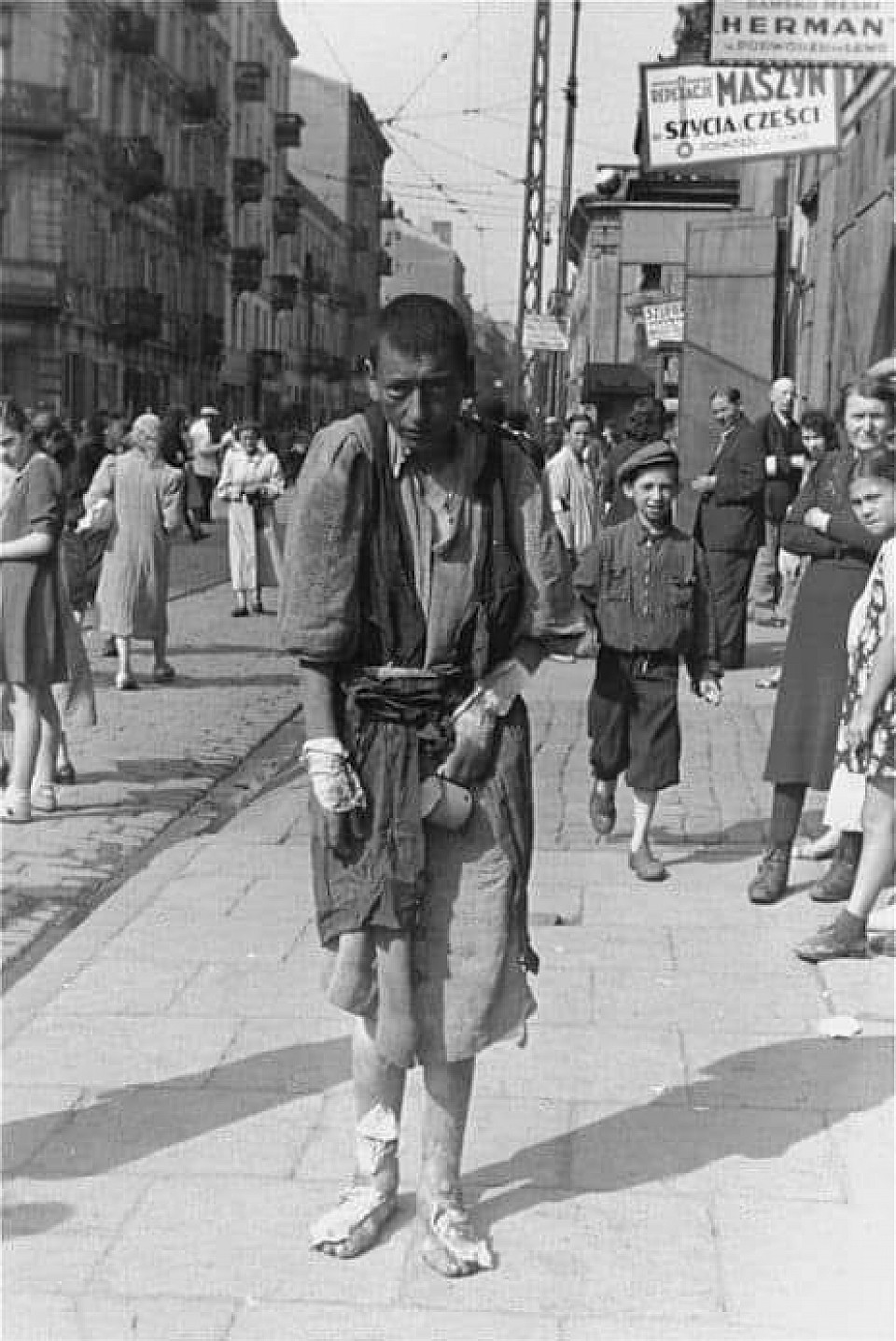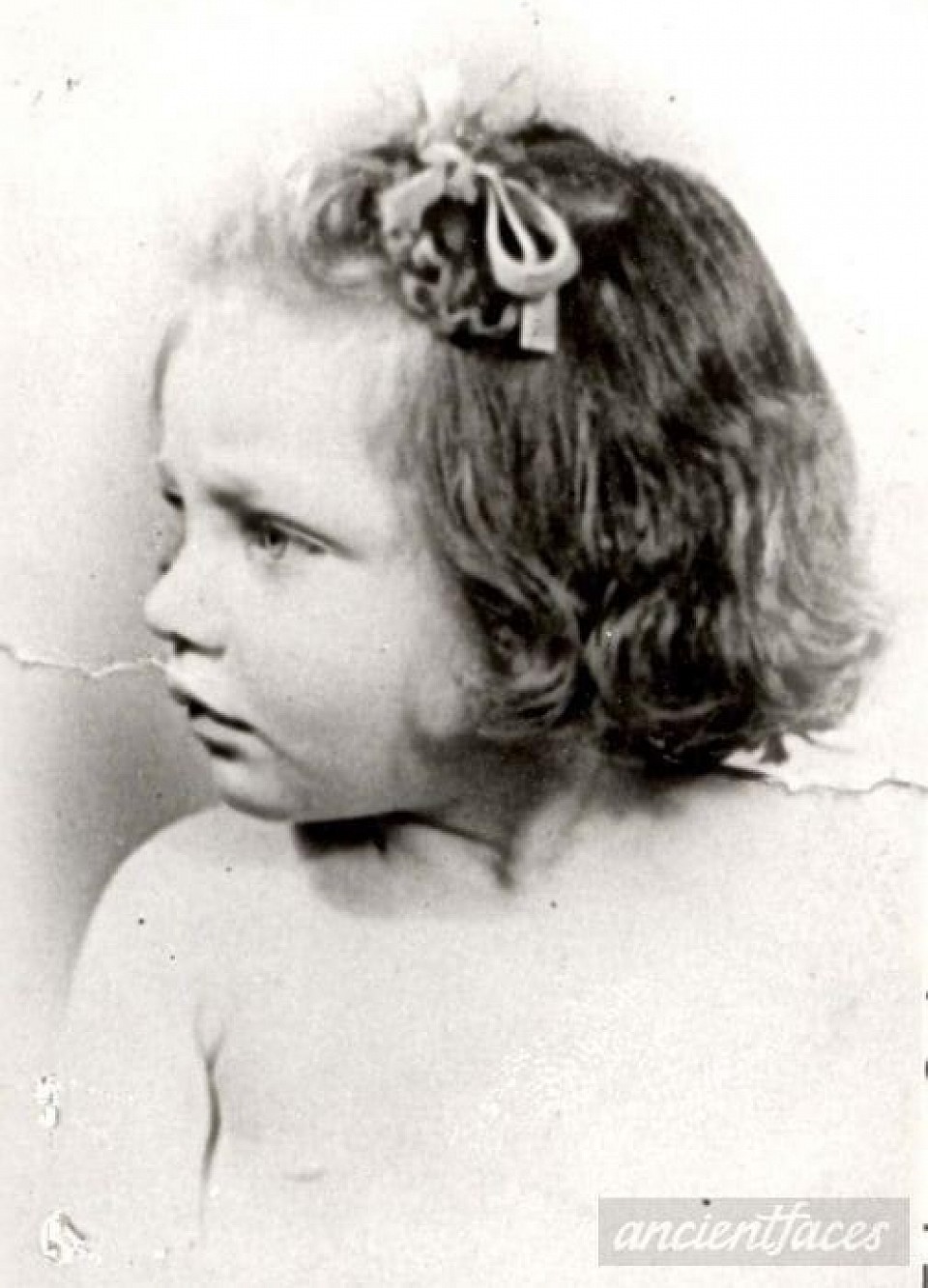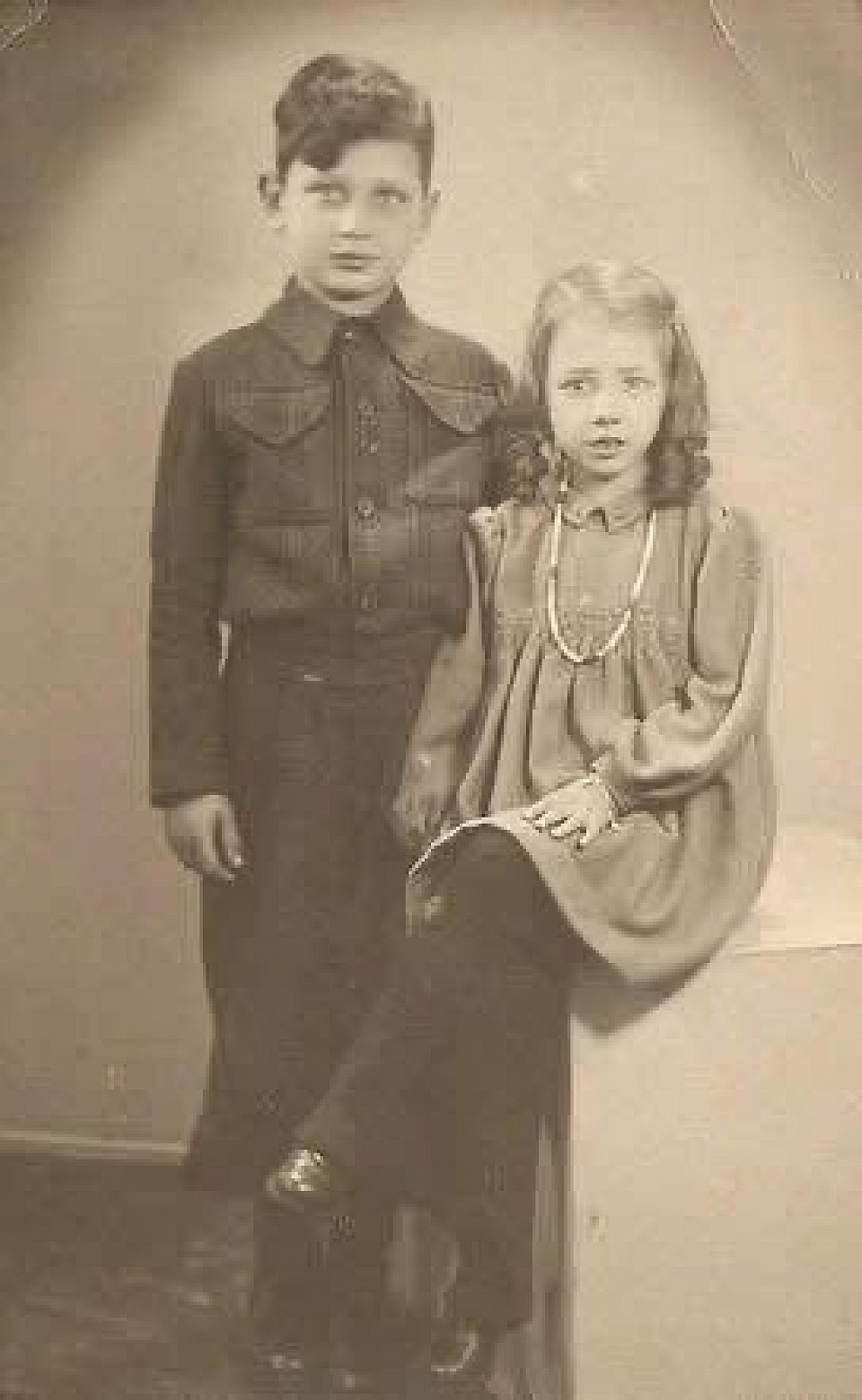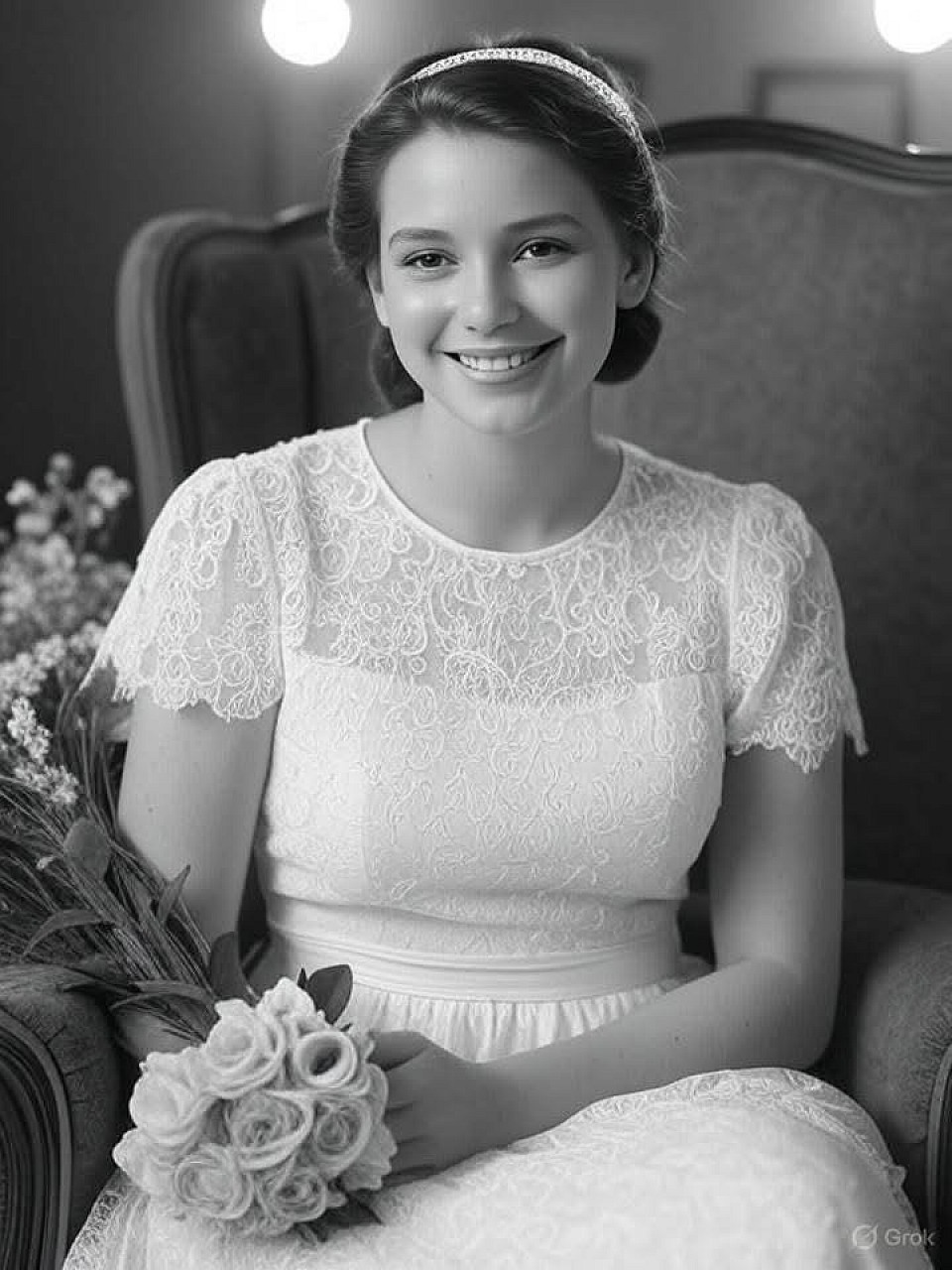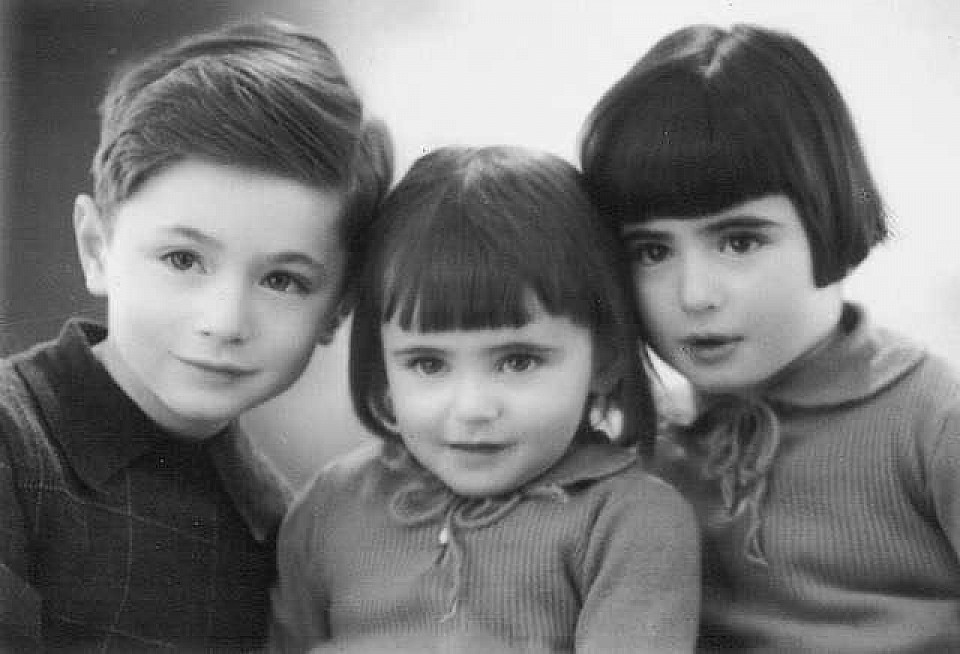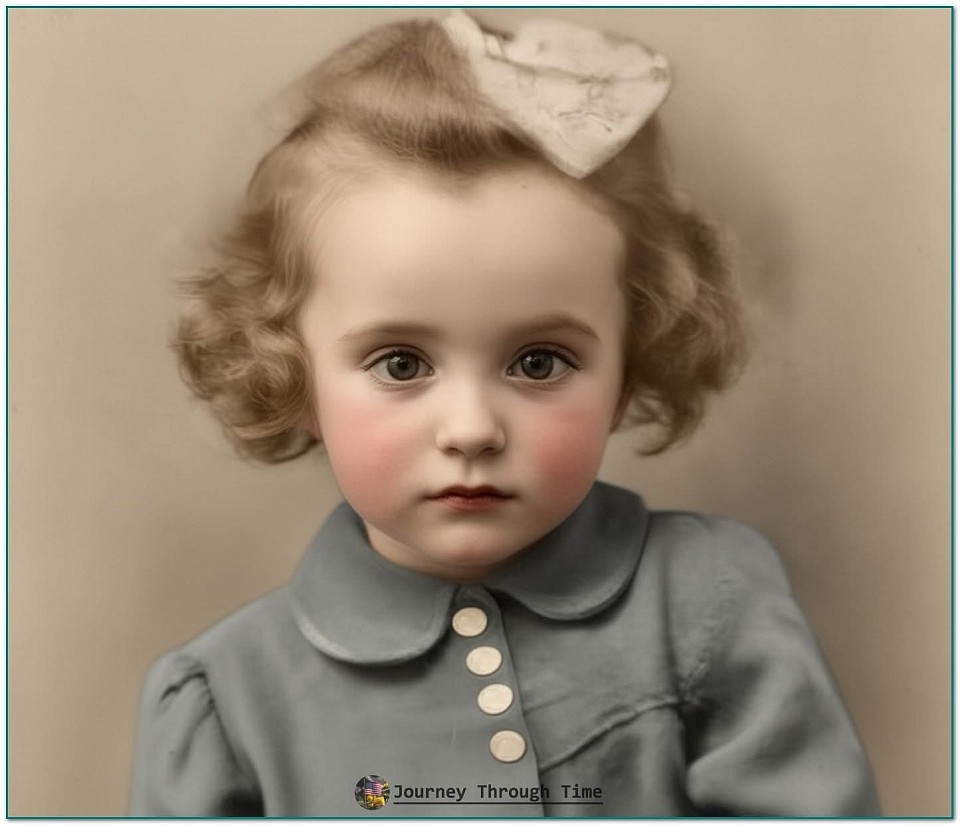Shoà- 6 milioni di ebrei + 1.5 milioni di T.Geova, ROM, Sinti, Omosessuali e persone di colore furono uccisi.
Ricorda cosa è successo
31 maggio 1939 | La ragazza ebrea olandese, Sara Channah Jacobsen, è nata a Rotterdam.
Fu deportata ad #Auschwitz da #Westerbork nell'agosto del 1942. Fu uccisa in una camera a gas dopo la selezione all'arrivo.
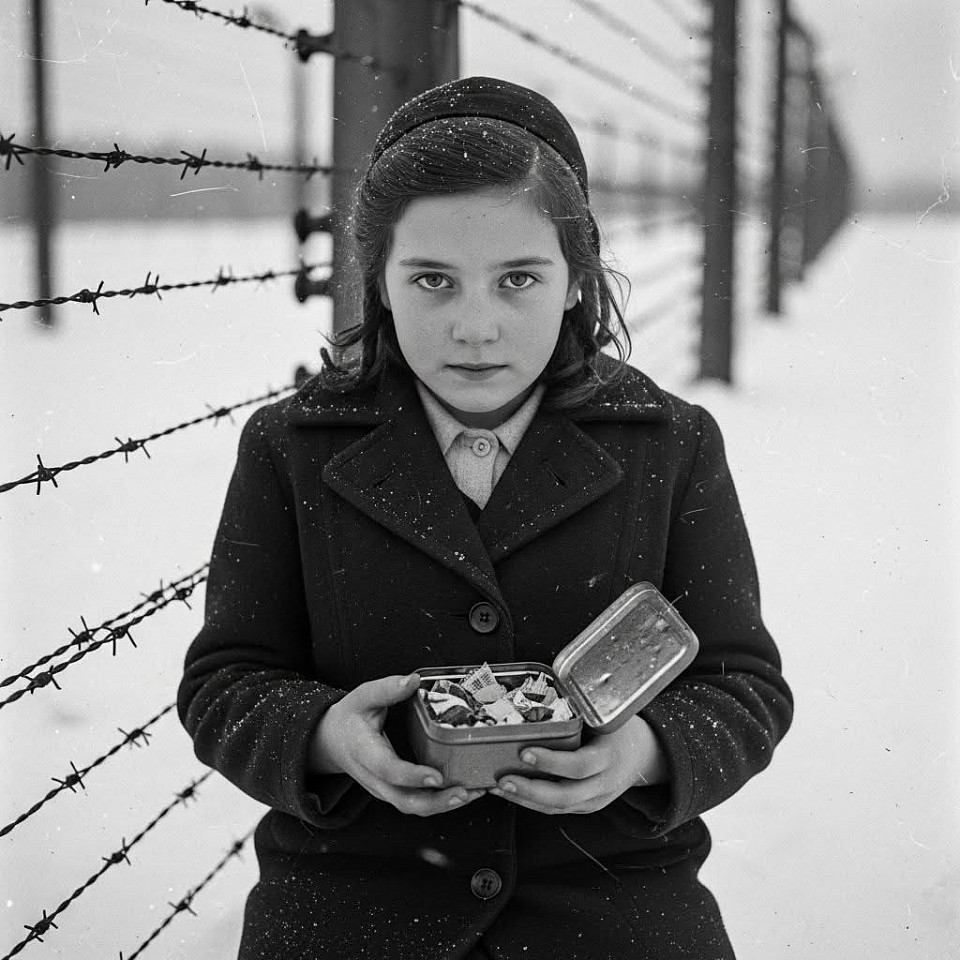 "Se trovi questo, tieni i colori. Se non ci sarò più, usali per ricordare che il mondo non è sempre stato così. E che non sarà sempre così." Marta non sopravvisse alla guerra. Jakub sì. Portò con sé la sua scatola di colori per il resto della sua vita. Quando morì nel 2007, la scatola di latta fu trovata sul suo comodino: conteneva ancora un nastro blu, un petalo giallo schiacciato e un pezzo di stoffa rossa non più grande di un'unghia. 🕯️ Ricordiamo Marta non per come morì, ma per la tenacia con cui si aggrappò alla bellezza in un mondo determinato a cancellarla." width="960" height="960" sd-img-show-desc="1" />
"Se trovi questo, tieni i colori. Se non ci sarò più, usali per ricordare che il mondo non è sempre stato così. E che non sarà sempre così." Marta non sopravvisse alla guerra. Jakub sì. Portò con sé la sua scatola di colori per il resto della sua vita. Quando morì nel 2007, la scatola di latta fu trovata sul suo comodino: conteneva ancora un nastro blu, un petalo giallo schiacciato e un pezzo di stoffa rossa non più grande di un'unghia. 🕯️ Ricordiamo Marta non per come morì, ma per la tenacia con cui si aggrappò alla bellezza in un mondo determinato a cancellarla." width="960" height="960" sd-img-show-desc="1" />
"Marta Klein (1929–1945) – La ragazza che collezionava colori" Marta Klein nacque a Cracovia, in Polonia, nel 1929. Amava i colori: i nastri scarlatti, la polvere di gesso blu sulle dita, i fiori selvatici gialli che crescevano dietro la panetteria di famiglia. Sua madre era solita scherzare: "Se il mondo dovesse mai diventare grigio, Marta lo dipingerà di nuovo di luce". Ma nel 1941, il mondo era già diventato grigio. Quando la sua famiglia fu costretta a rifugiarsi nel ghetto di Cracovia, Marta portò con sé di nascosto pezzi di colore: minuscoli ritagli di stoffa, gesso, pezzi di carta da regalo. Li teneva nascosti in una scatola di latta arrugginita che portava appesa a un cordino sotto i vestiti. "Un museo", lo chiamava. "Per quando il mondo tornerà bello". Suo fratello maggiore Jakub a volte la sorprendeva a frugare tra i ritagli a tarda notte, tenendo un nastro blu rivolto verso la luce della luna. "Dovresti dormire", le sussurrò una volta. "Lo farò", disse. "Quando saremo al sicuro." Nel 1943, durante la liquidazione del ghetto, Marta e suo fratello furono separati dai genitori. Furono mandati a Plaszów, e poi ad Auschwitz. Per tutto il tempo, Marta conservò la scatola. Persino le guardie, non vedendovi alcun valore, la lasciarono passare. Il suo ultimo biglietto, scarabocchiato sul retro di cartone di un'etichetta di razioni scartata e infilato nel palmo di Jakub il giorno della loro separazione, recitava: > "Se trovi questo, tieni i colori. Se non ci sarò più, usali per ricordare che il mondo non è sempre stato così. E che non sarà sempre così." Marta non sopravvisse alla guerra. Jakub sì. Portò con sé la sua scatola di colori per il resto della sua vita. Quando morì nel 2007, la scatola di latta fu trovata sul suo comodino: conteneva ancora un nastro blu, un petalo giallo schiacciato e un pezzo di stoffa rossa non più grande di un'unghia. 🕯️ Ricordiamo Marta non per come morì, ma per la tenacia con cui si aggrappò alla bellezza in un mondo determinato a cancellarla.
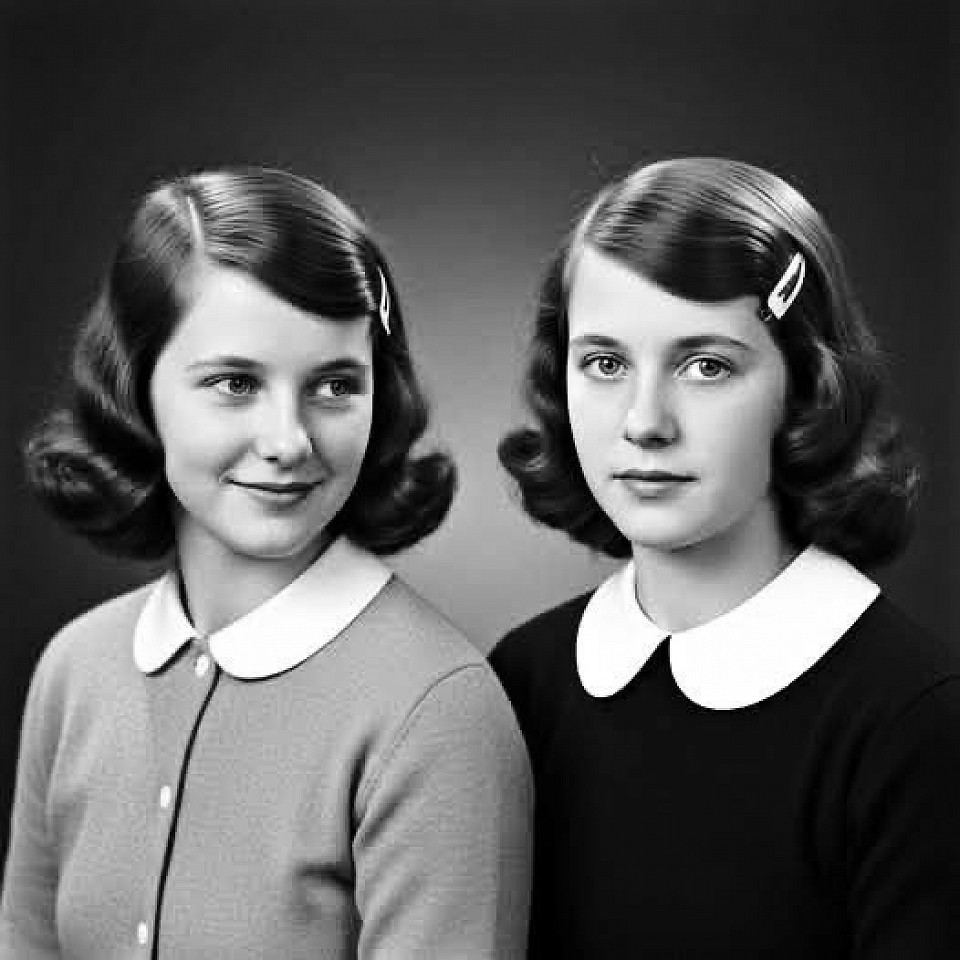
Marianne Eisner was born on June 2, 1937, in Hilversum, the Netherlands, into a Jewish family. She was the daughter of Franz Eisner, an engineer, and Erna Abramowitz, a soprano singer. Marianne had an older brother named Hans. Around 1942, the Eisner family was sent to the Westerbork transit camp. Erna, known for her beautiful voice, took part in the camp’s cultural activities—one of the few remaining signs of humanity amid horrific conditions. These programs were suddenly stopped in July 1944, and the performers began to be deported. On July 31, 1944, Marianne, along with her parents and brother, was deported to Terezín (Theresienstadt). Later, on October 28, 1944, they were put on the final transport to Auschwitz, where they were all killed. Marianne Eisner was only 7 years old. May their memories be a blessing.
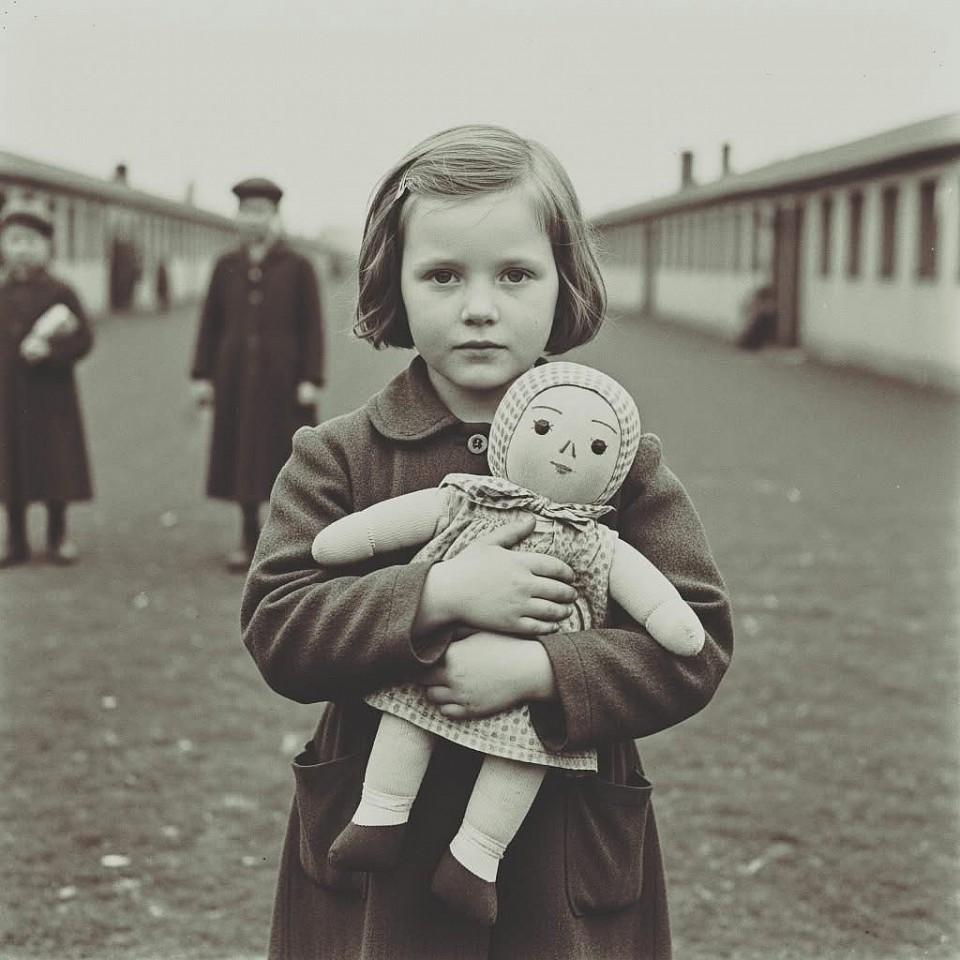
1945 – Bergen-Belsen, Germany – The Doll Named Sara A child named Ilse arrived at Bergen-Belsen with nothing but a rag doll she named Sara. She whispered to it every night, feeding it crumbs, protecting it like a sister. One morning, the doll was taken during a selection. Ilse cried, “They took my only family.” Ilse didn’t survive — but years later, the doll was found buried in camp dirt by a Red Cross team. It's now displayed in Yad Vashem. 🕯️ A child's love outlasted the cruelty. #bergenbelsen #childoftheholocaust #lostandfound #yadvashem #neveragain
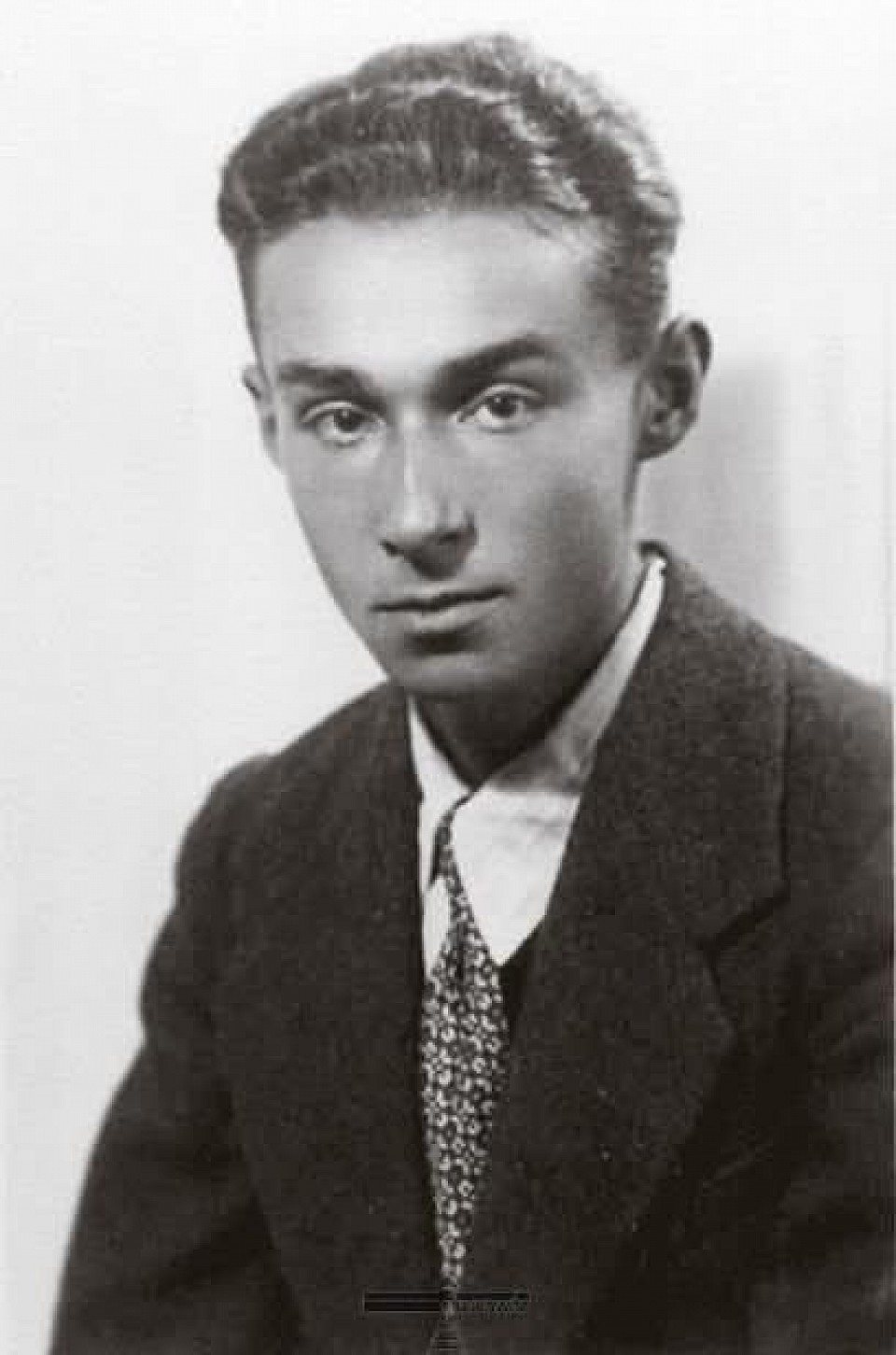
31 July 1919 | Primo Levi was born in Turin. He was an Italian Jewish writer & chemist. From 26 February 1944 a prisoner of the German Nazi #Auschwitz camp no. 174517. In September 1947 he published his book "If this is a man". He passed away in 1987. “I am constantly amazed by man's inhumanity to man.” Those words by Primo Levi are still very relevant. 75 years after the liberation of Auschwitz we still need this warning to reflect about our moral responsibility for the world we live in. --- "If this is a man" You who live safe In your warm houses; You who find on returning in the evening Hot food and friendly faces: Consider if this is a man Who works in the mud Who knows no peace Who fights for a bit of bread Who dies because of a yes and because of a no Consider if this is a woman, Without hair and without name Without enough strength to remember Vacant eyes and cold womb Like a frog in the winter: Reflect on the fact that this has happened: These words I commend to you: Inscribe them on your heart When staying at home and going out, Going to bed and rising up; Repeat them to your children: Or may your house fall down, Illness bar your way, Your loved ones turn away from you.
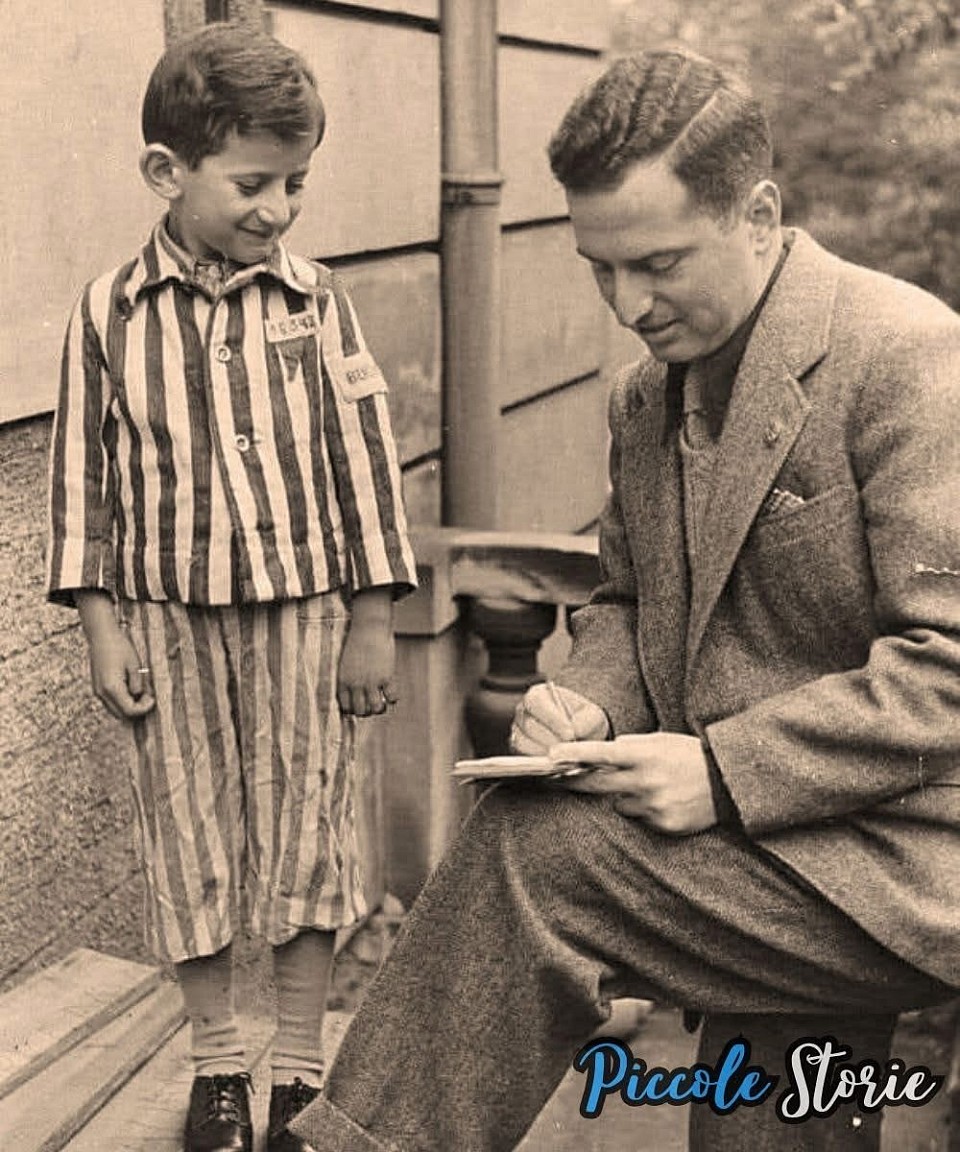
Aveva solo quattro anni quando lo strapparono alla sua casa e lo gettarono nell’inferno di Buchenwald. Si chiamava Joseph Schlipstein e, tra migliaia di volti segnati dall’orrore, il suo era uno dei più piccoli. Il destino, lì dentro, non lasciava scampo ai bambini. Ma suo padre non si arrese. In un gesto disperato, lo nascose dentro una valigia, tenendolo lontano dagli occhi delle SS. Per qualche tempo, quel guscio di tela e cuoio fu il suo rifugio, la sua corazza fragile contro un mondo che voleva cancellarlo. Il segreto, però, non poteva durare. Un giorno, le guardie lo scoprirono. E accadde l’inimmaginabile: invece di condannarlo, alcuni di loro — forse mossi da un residuo di coscienza, forse per capriccio — iniziarono a trattarlo come la “mascotte” del campo. Un gesto assurdo e inspiegabile in un luogo costruito per annientare ogni traccia di compassione. E così Joseph sopravvisse. Nel 1948, a sette anni, sedette davanti a un giornalista americano. Indossava ancora la divisa a righe dei prigionieri. Il suo corpo era piccolo, fragile, ma il suo sguardo portava la forza di chi aveva attraversato l’oscurità e ne era uscito vivo. La sua foto fece il giro del mondo, diventando un simbolo di resistenza e di speranza. Fu uno dei più giovani a uscire vivo da Buchenwald. E trovò il coraggio di raccontare ciò che aveva vissuto. Perché certe storie, una volta sopravvissute, non possono essere sepolte. Devono essere ricordate. Sempre. Piccole Storie.
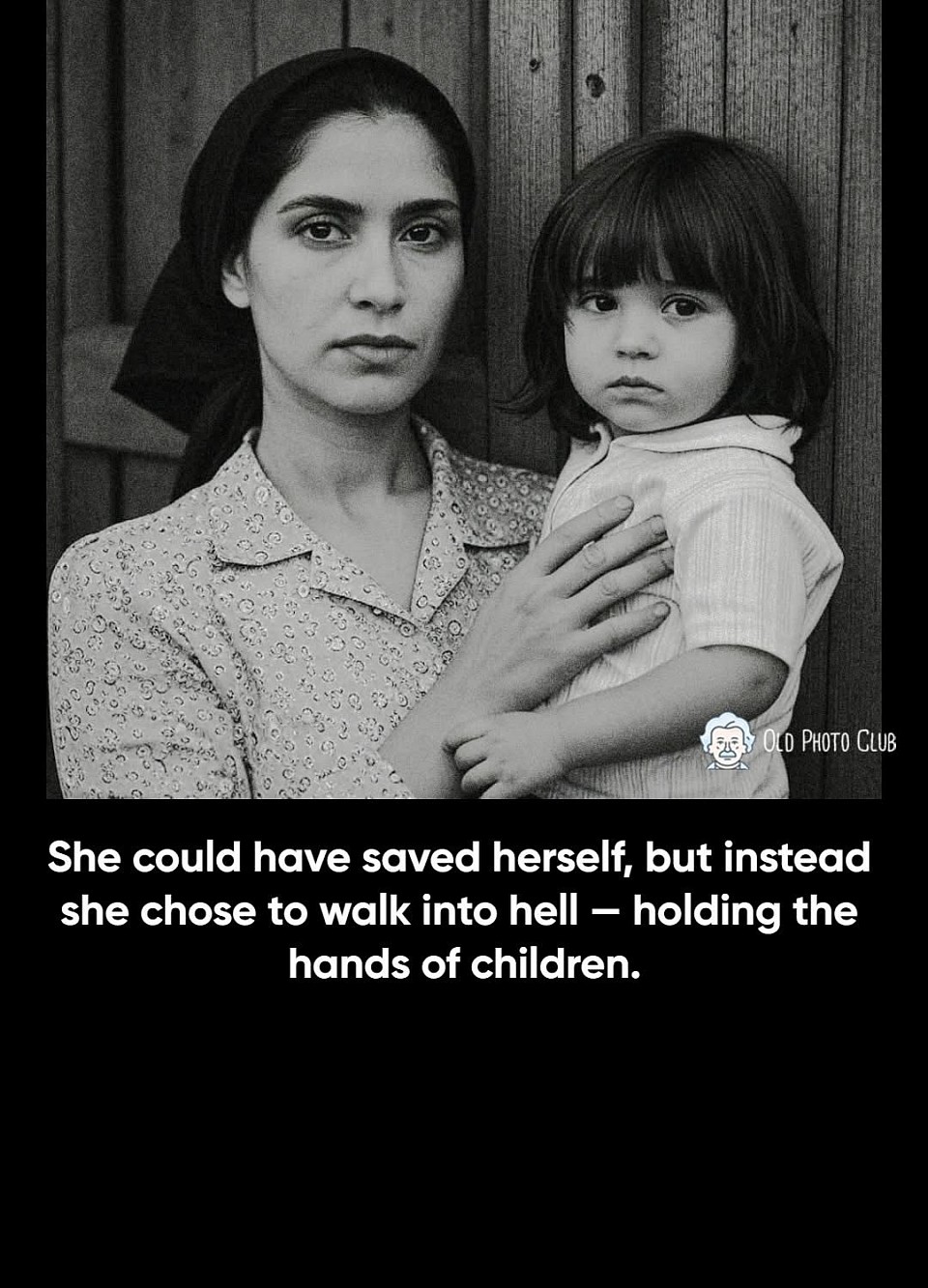
Nel 1943, Ottla Kafka fece una scelta che pochi avrebbero potuto comprendere. Quando giunse l'ordine di deportare dei bambini ad Auschwitz, non si tirò indietro. Si offrì volontaria per accompagnarli, pienamente consapevole di ciò che l'aspettava. Nata il 29 ottobre 1892 a Praga, Ottla era la più giovane di quattro figli in una famiglia ebraica. Mentre suo fratello, Franz Kafka, sarebbe diventato uno degli scrittori più famosi al mondo, Ottla costruì silenziosamente la propria eredità di coraggio. Indipendente e volitiva, ruppe con la tradizione – studiando agraria, gestendo fattorie e sposando Josef David, un avvocato cristiano, nonostante la disapprovazione della società. Quando la persecuzione nazista si intensificò, divorziò nel 1942, probabilmente per proteggere il marito e le loro due figlie. Nello stesso anno, fu deportata nel ghetto di Theresienstadt. Lì, si dedicò ad aiutare gli altri, soprattutto i più giovani e vulnerabili. Nell'ottobre del 1943, giunse l'ordine di un trasporto ad Auschwitz. Tra i nomi c'erano decine di bambini. Ottla avrebbe potuto rimanere indietro. Invece, si fece avanti per accompagnarli, offrendo conforto in un viaggio senza ritorno. Il 7 ottobre 1943, Ottla e i bambini furono assassinati nelle camere a gas. Le sue lettere a Franz Kafka rimangono, rivelando una donna di profondo calore umano, indipendenza e forza morale. La storia la ricorda non solo come la sorella di un genio letterario, ma come una persona che, nel suo ultimo atto, scelse la compassione alla sopravvivenza. #MemoriaOlocausto #Coraggio ~Old Photo Club
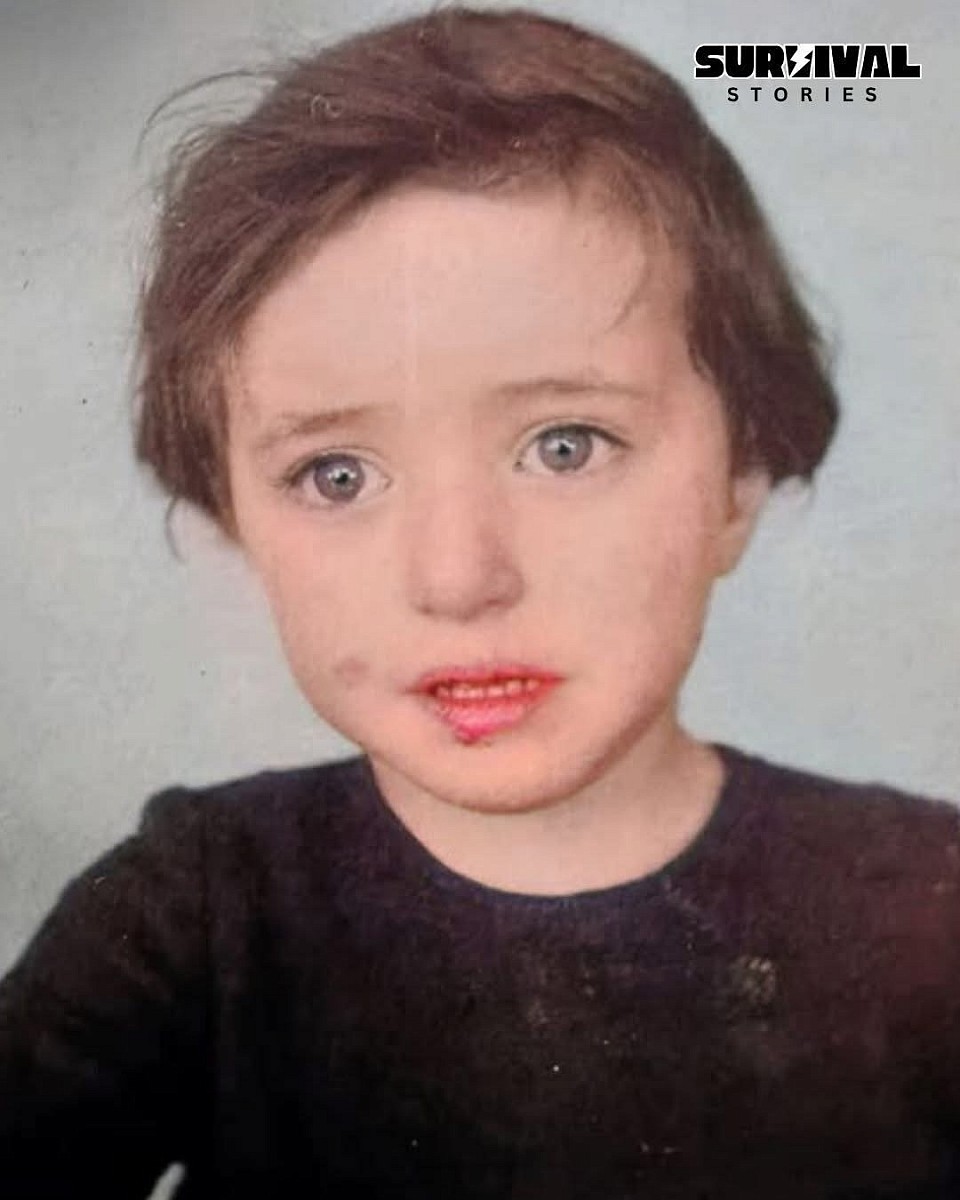
1943 L'Aia, quando Gusta Wahrhaftig, a soli due anni, fu strappata all'orfanotrofio e mandata a Sobibór, per non farvi mai più ritorno. Gusta Wahrhaftig nacque il 31 ottobre 1940 all'Aia, nei Paesi Bassi. Una bambina minuta dagli occhi luminosi, era la più piccola di quattro fratelli. I suoi genitori, Rosa e Zacharja, faticavano a mantenere la famiglia. La casa era affollata, le giornate lunghe e dure. Quando suo padre si ammalò gravemente, la madre di Gusta fece la scelta impossibile: mandare la figlia più piccola in un orfanotrofio ebraico. Per un breve periodo, la vita fu più leggera. Gusta giocava con gli altri bambini, rideva alla luce del sole e sentiva il calore dei suoi genitori durante le visite. Giocattoli e giochi riempivano le sue piccole mani. Ma le ombre si stavano insinuando sull'Europa e la felicità era fragile. Il 17 marzo 1943, i soldati assaltarono l'orfanotrofio. Urla echeggiavano nei corridoi. I bambini furono radunati. Gusta fu rapita. Arrivò a Westerbork, riunita alla sua famiglia, con i volti pallidi, gli occhi tormentati. Insieme, aspettarono, impotenti, mentre la macchina dell'odio avanzava. A fine aprile, il treno li portò verso est. Il rumore delle ruote sui binari non riusciva a mascherare il terrore. Il 30 aprile 1943, Gusta, i suoi genitori e i suoi fratelli arrivarono a Sobibór. Le camere a gas li attendevano. A soli due anni, la sua vita finì prima di iniziare veramente. Le sue scarpette non toccarono mai più terra. La sua risata svanì nel silenzio della storia. La storia di Gusta è una delle innumerevoli vite rubate durante l'Olocausto. Era più di una statistica. Era una figlia, una sorella, una bambina con un nome, un sorriso e un breve contatto con l'amore. Il suo ricordo permane nelle fotografie, nei documenti e nell'eco di voci che avrebbero potuto essere. E nel silenzio, la ricordiamo: una vita interrotta, un mondo oscurato per sempre, un piccolo battito cardiaco che il mondo non deve mai dimenticare. #Gusta Wahrhaftig #Storiadell'Olocausto #Sobibor #MaiDimenticato #RicordaIBambini
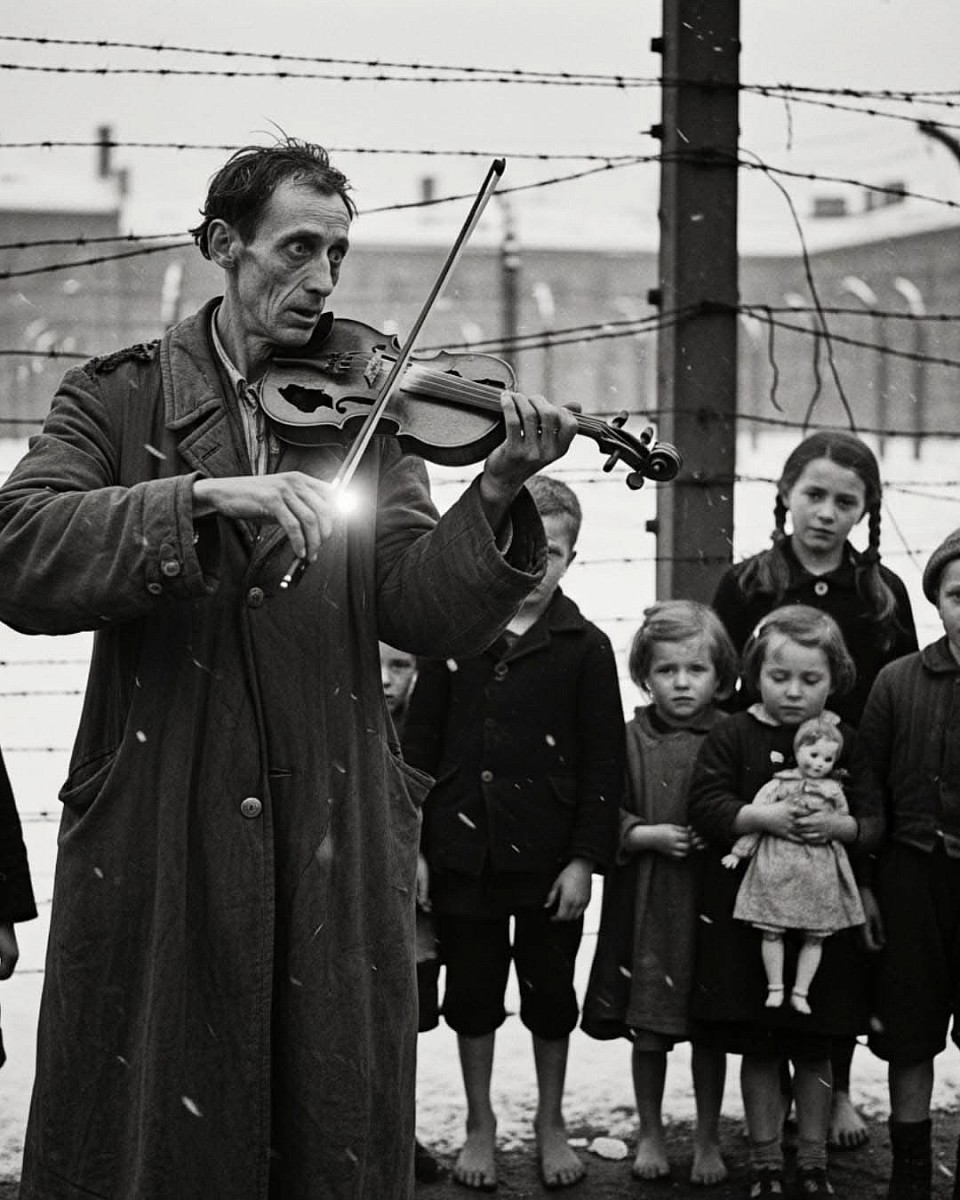
1944, ghetto di Terezín. Jakob Klein, ex violinista viennese, ricostruì un violino rotto utilizzando frammenti: una piastra posteriore incrinata, corde spaiate e un archetto ricavato da filo metallico. Nonostante la fame, la stanchezza e la malattia, suonava per i bambini ogni domenica, offrendo loro una fuga fugace attraverso la musica in mezzo all'oppressione implacabile. Quando arrivarono i treni per Auschwitz, Jakob si fermò tra i vagoni barricati, il suo archetto tremante che disegnava note malinconiche e provocatorie nell'aria gelida. Le famiglie si fermavano ad ascoltare, trasportate per un attimo dalla paura e dalla disperazione. La sua musica divenne una voce per coloro le cui parole erano state messe a tacere, un fragile ponte tra sofferenza e speranza. Dopo la guerra, il violino di Jakob fu scoperto sotto le assi del pavimento del ghetto. Una corda rimase tesa, come se... 👉 Questa storia è solo l’inizio... Clicca sul link per scoprire il resto della verità che non deve essere taciuta. 👉 https://axonghoi.io.vn/il-violino-di-terezin-la-vera-storia-di-jakob-klein-luomo-che-suono-contro-loblio-it/ 💟 💙 💖
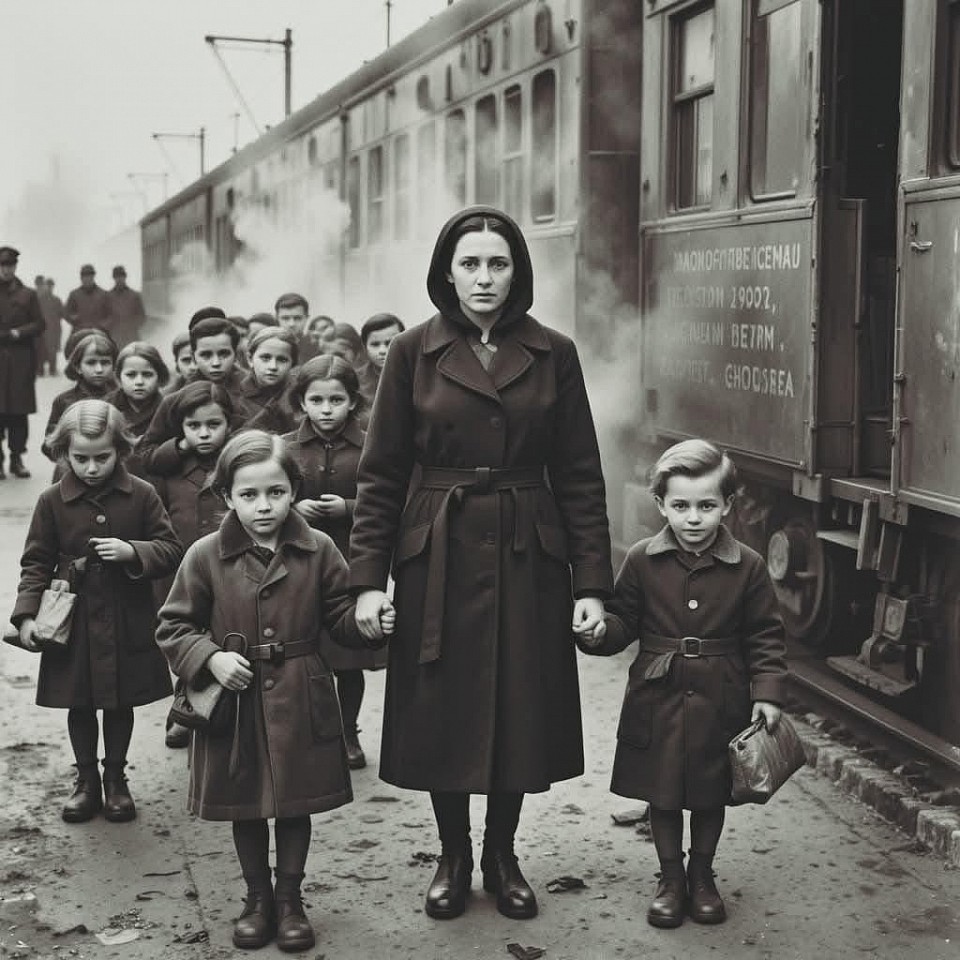
"L'ultimo viaggio di Ottla Kafka" — 1943 Nata a Praga nel 1892, Ottla Kafka era la sorella minore di Franz Kafka. A differenza del suo celebre fratello, la cui eredità era legata alle parole, Ottla fu ricordata per la sua fiera indipendenza, la sua silenziosa ribellione e la sua incrollabile compassione. Dedicò la sua vita all'agricoltura anziché alle convenzioni, sposò un avvocato cristiano nonostante la disapprovazione sociale e visse con un calore e un coraggio che la contraddistinguevano. Quando la persecuzione nazista si intensificò, Ottla fece scelte dolorose e ponderate. Nel 1942 divorziò dal marito, probabilmente per proteggere lui e le loro figlie dai pericoli che la sua identità ebraica comportava. Nello stesso anno fu deportata nel ghetto di Theresienstadt, dove si dedicò alla cura dei bambini, offrendo frammenti di speranza in un mondo progettato per spegnerla. Nel 1943, quando giunse l'ordine di trasportare i bambini ad Auschwitz, Ottla fece una scelta inimmaginabile: si offrì volontaria per accompagnarli. Comprese il destino che l'attendeva, ma si rifiutò di lasciare che i bambini lo affrontassero da soli. Il 7 ottobre 1943, lei e i bambini furono assassinati nella camera a gas. Il suo coraggio permane nelle sue lettere a Franz e nel ricordo del suo ultimo atto: la compassione prediletta rispetto alla sopravvivenza, l'umanità preservata anche di fronte all'orrore assoluto.
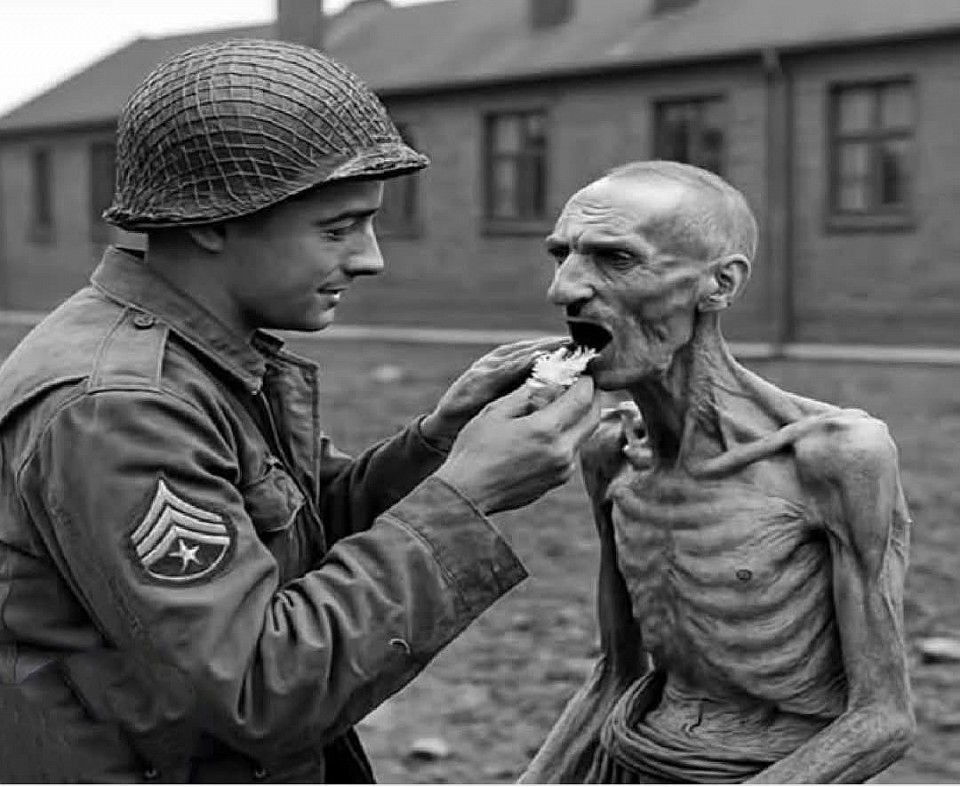
Il soldato che condivise la sua razione con uno scheletro – Nordhausen, Germania, 1945 Alle porte del campo di concentramento di Nordhausen, il soldato americano Lee Davis si fermò di colpo. Rannicchiato contro un muro giaceva un uomo così emaciato da sembrare più un'ombra che un essere umano: uno scheletro che respirava e non riusciva nemmeno a sollevare la testa. I suoi occhi si aprirono, un batter d'occhio, come se evocasse l'ultima scintilla di vita. Davis si inginocchiò accanto a lui, frugò nello zaino e staccò un pezzo della sua razione di cioccolato. Con una cura che sembrava quasi sacra, glielo premette in bocca. L'uomo iniziò a piangere – lacrime silenziose e tremanti – stringendo quel pezzetto di cioccolato come se fosse un tesoro. Non riusciva a masticare, non ancora, ma lo teneva stretto come una promessa. "Non parlavo da settimane", avrebbe poi ricordato un altro prigioniero liberato, "ma sussurrai 'grazie'... in inglese." Il soldato Davis non se ne andò. Rimase con l'uomo per tutta la notte, parlandogli, tenendolo sveglio, tenendolo in vita. Il prigioniero sopravvisse. E per anni, scrisse lettere al soldato che sedeva con lui nell'oscurità, indirizzandole a "l'uomo che ha riportato il sapore nel mondo".

